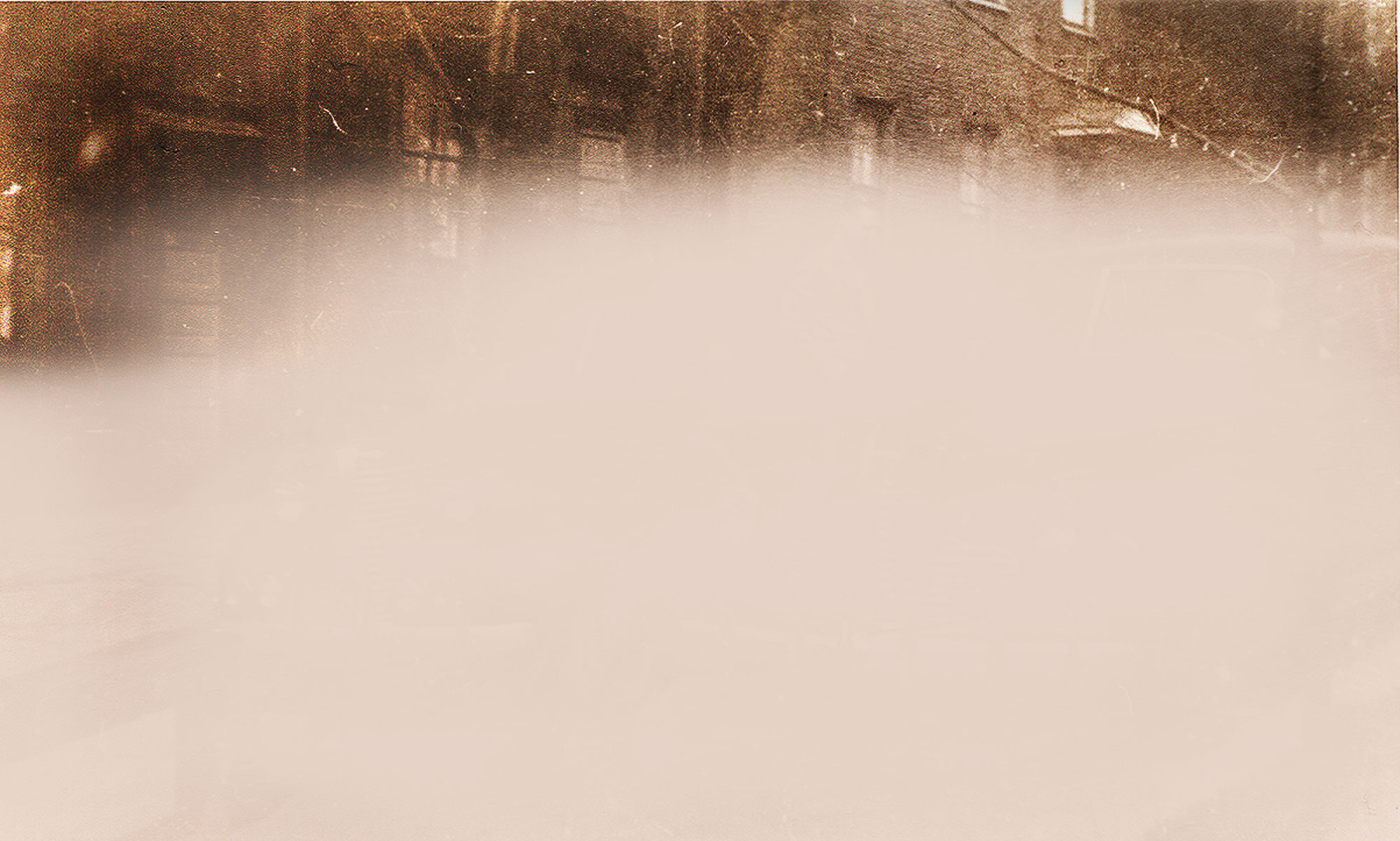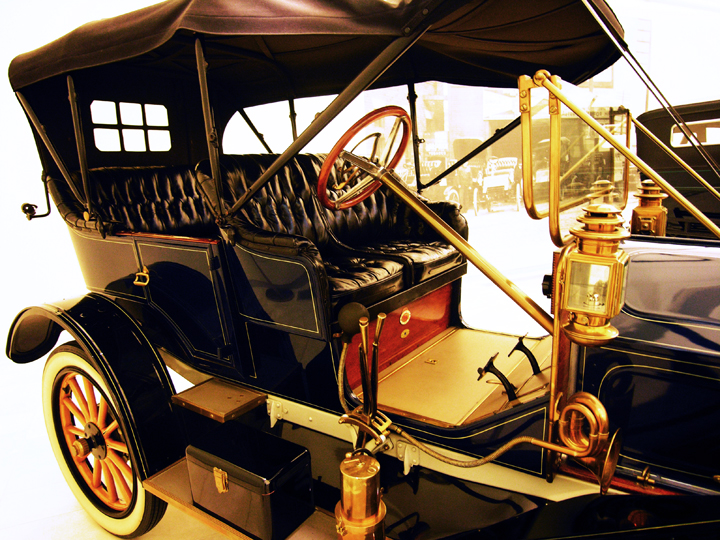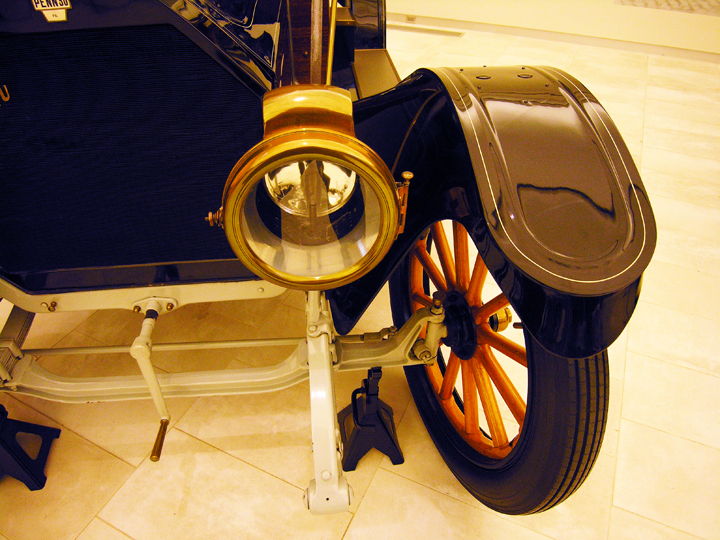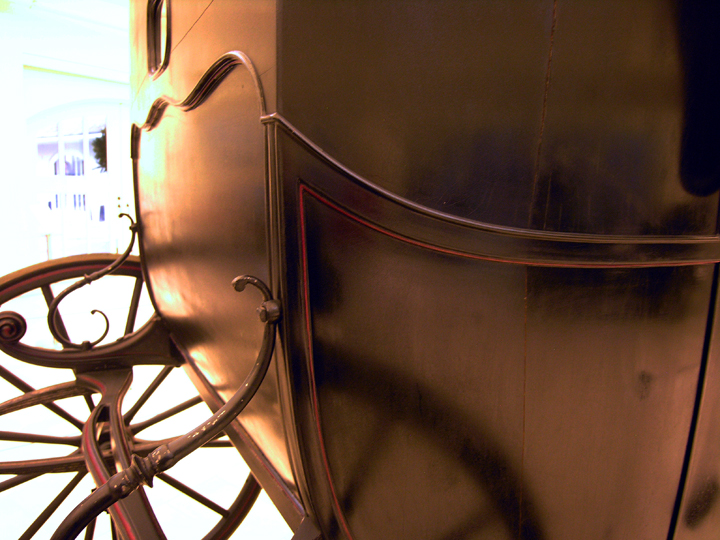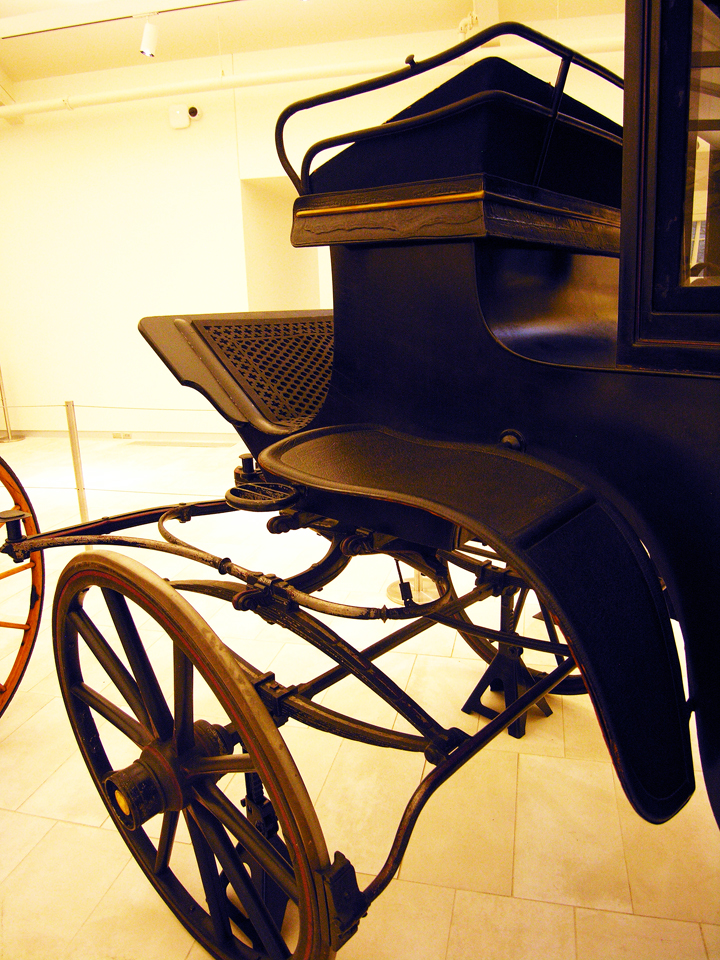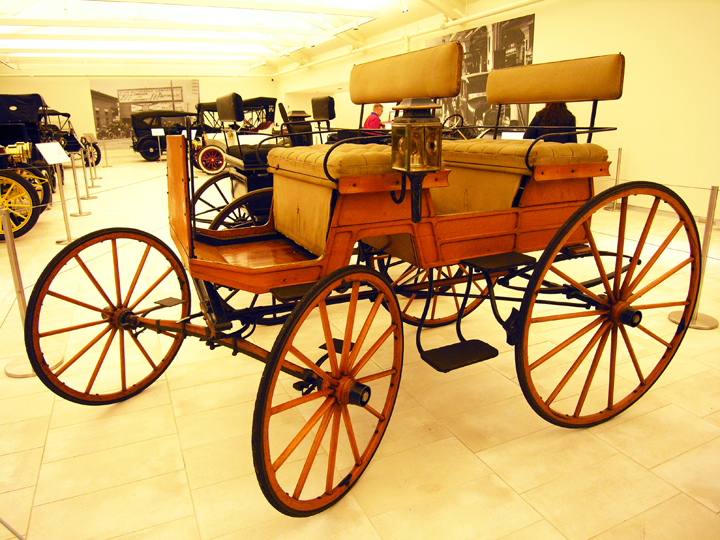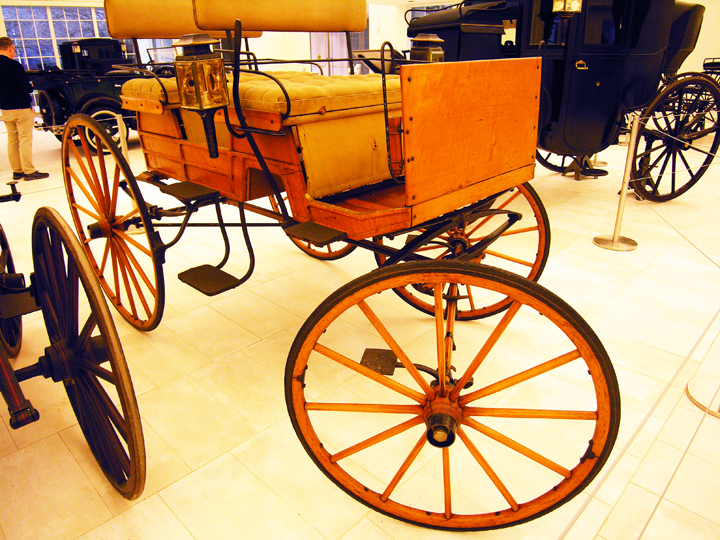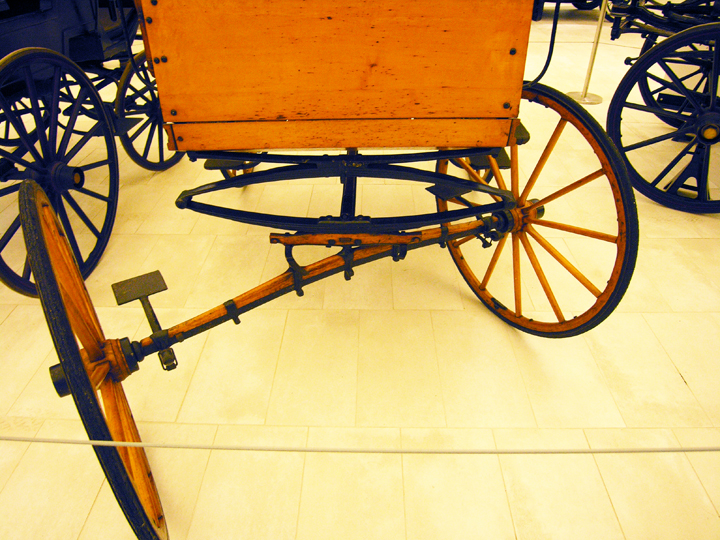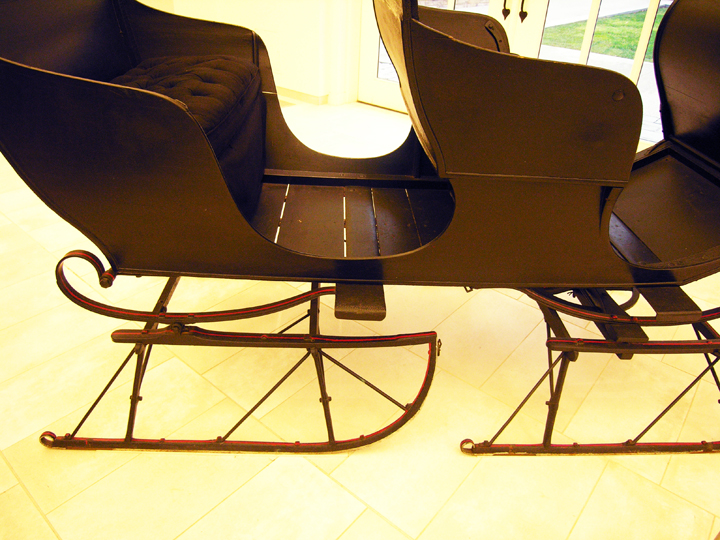I’m not into celebrating wealth, which has a tendency to take over anything it touches, but some things are worth looking at for reasons aside from who could afford to own them. These vehicles embody the work of the people who designed, built, operated and maintained them: engineers, craftspeople, laborers, mechanics, drivers, cleaners. As such they also represent the history of labor and not just the trappings of wealth.
Even knowing that, I wrestle with the context, so let’s get that out of the way. Henry Clay Frick was a big industrialist, union-buster and one of the wealthiest men in American in the late 19th and early 20th century. He started with a modest mansion in Pittsburgh then moved to a very large mansion in New York, which later became a museum filled with the art he’d collected.
The Pittsburgh property remained in the Frick family and is now open to the public. Some parts of it, including the Car and Carriage Museum, are free of charge. There are a couple dozen vehicles on display at any given time, dating from the 1880s to 1940. Many of the carriages and two of the cars belonged to the Frick family. Another 20 or so vehicles came from other collectors — too many to have everything on display at once.
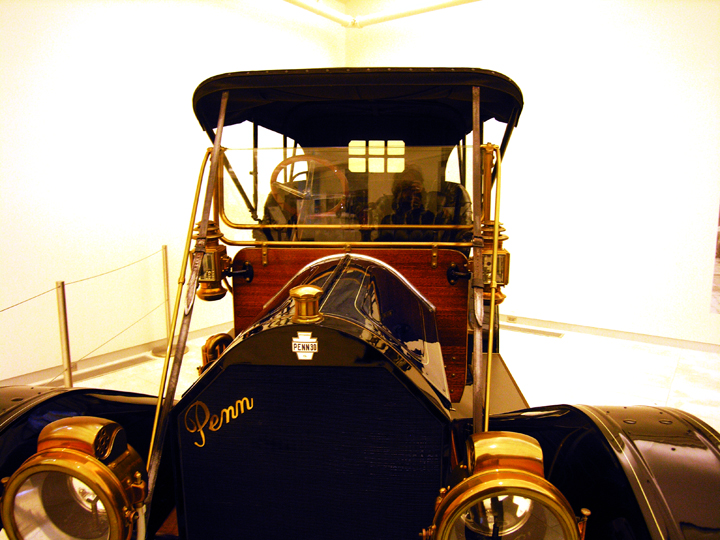 (above and below: the Penn 30 Touring Car, manufactured by the Penn Motor Company in Pittsburgh in 1911)
(above and below: the Penn 30 Touring Car, manufactured by the Penn Motor Company in Pittsburgh in 1911)
They’re so beautiful. Almost hyperreal, at first. Old things have their own power but are usually faded, incomplete, or broken. Everything here is clean, polished and in excellent condition; the physical presence is undiminished. The craftsmanship, materials and forms shine out.

(above and below: details of a brougham manufactured by Brewster & Co. in New York in 1881)
The carriages were my favorites. They look delicate but were designed for bumpy cobblestones and unpaved streets (or no streets at all). The lines of the bodies and the finishes and decoration are similar to furniture and the interior design of the time, but more restrained, suiting their functionality.
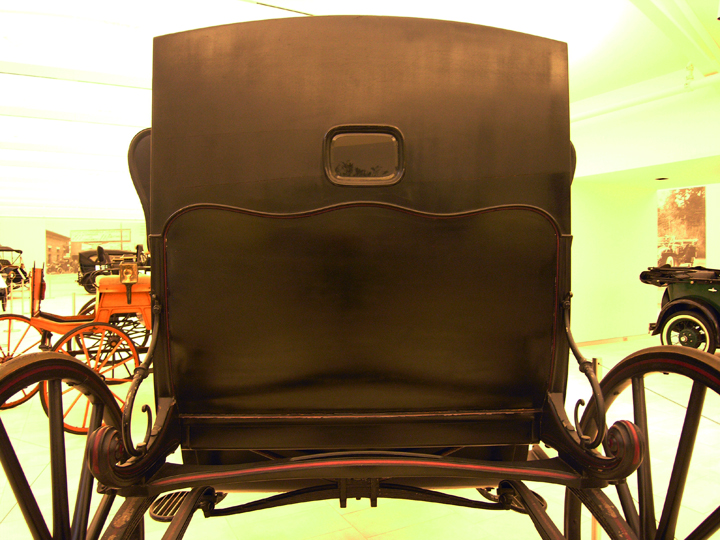 The back of the brougham with it’s tiny little window. The surface of this was so interesting — lacquer, maybe?
The back of the brougham with it’s tiny little window. The surface of this was so interesting — lacquer, maybe?
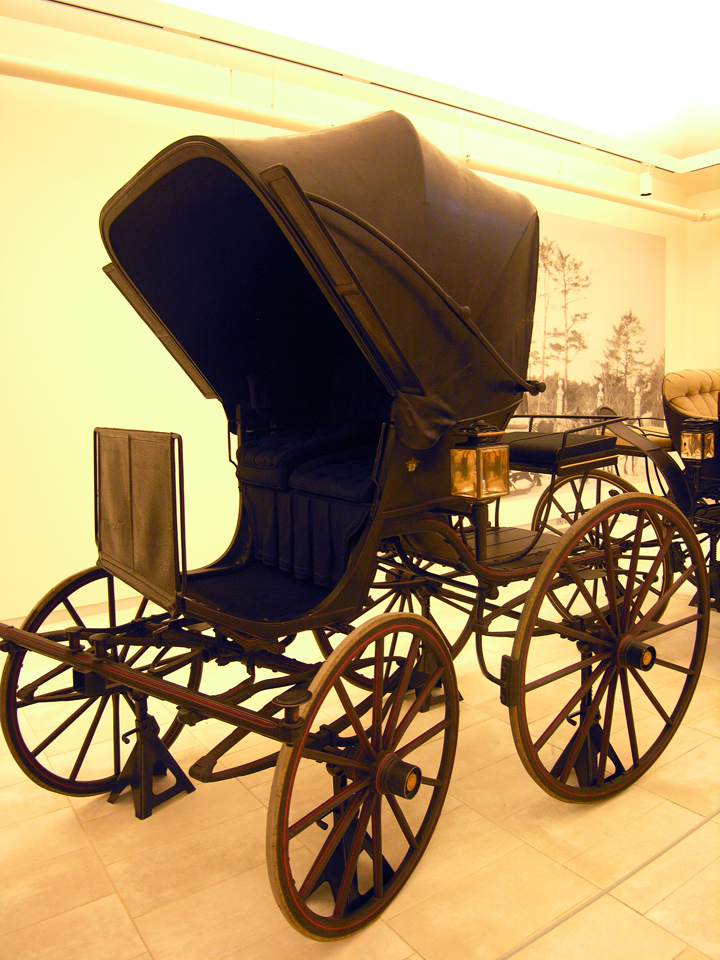 The shape of that pull-up top!!
The shape of that pull-up top!!
I wonder if this is a one or two-horse open sleigh. Also, what happens when you hit a rock going across a field?

(An electric Stanhope, manufactured in 1903 by the Baker Motor Vehicle Company, Cleveland, Ohio)
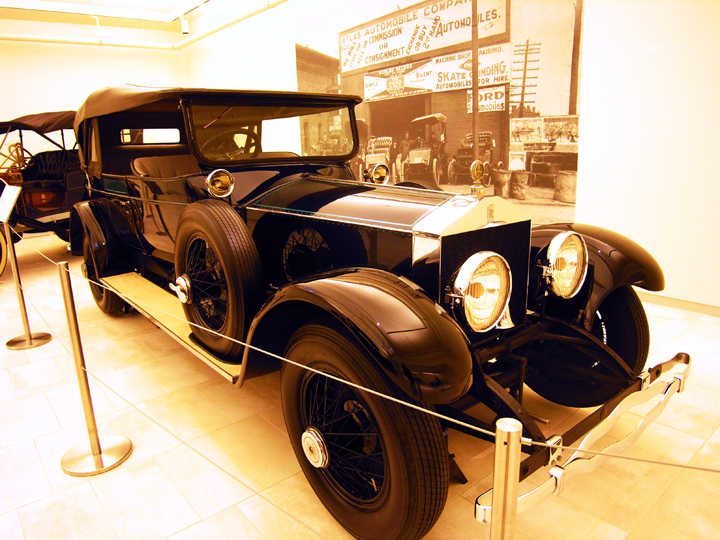
(1914 Rolls Royce Silver Ghost touring car)
This one looks like it was designed for the express purpose of mowing down the proletariat.

(The Stanley Steamer, made in 1909 by the Stanley Motor Carriage Company, Newton, Massachusetts)
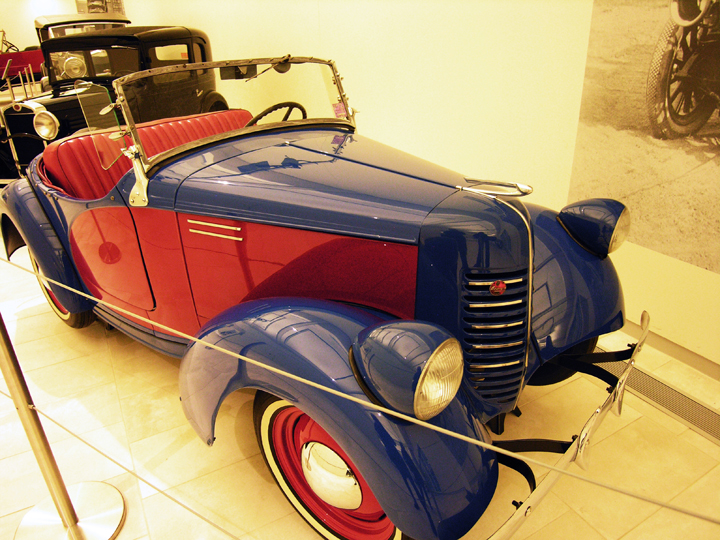 (1939 American Bantam roadster)
(1939 American Bantam roadster)
The exhibit space is large, open and clean but the light is an odd yellow color. That’s probably for conservation reasons but it was actually a bit unpleasant and made it difficult to work out the white balance for photos. I’ll go back at some point and try again — it’d be nice to get more details.
